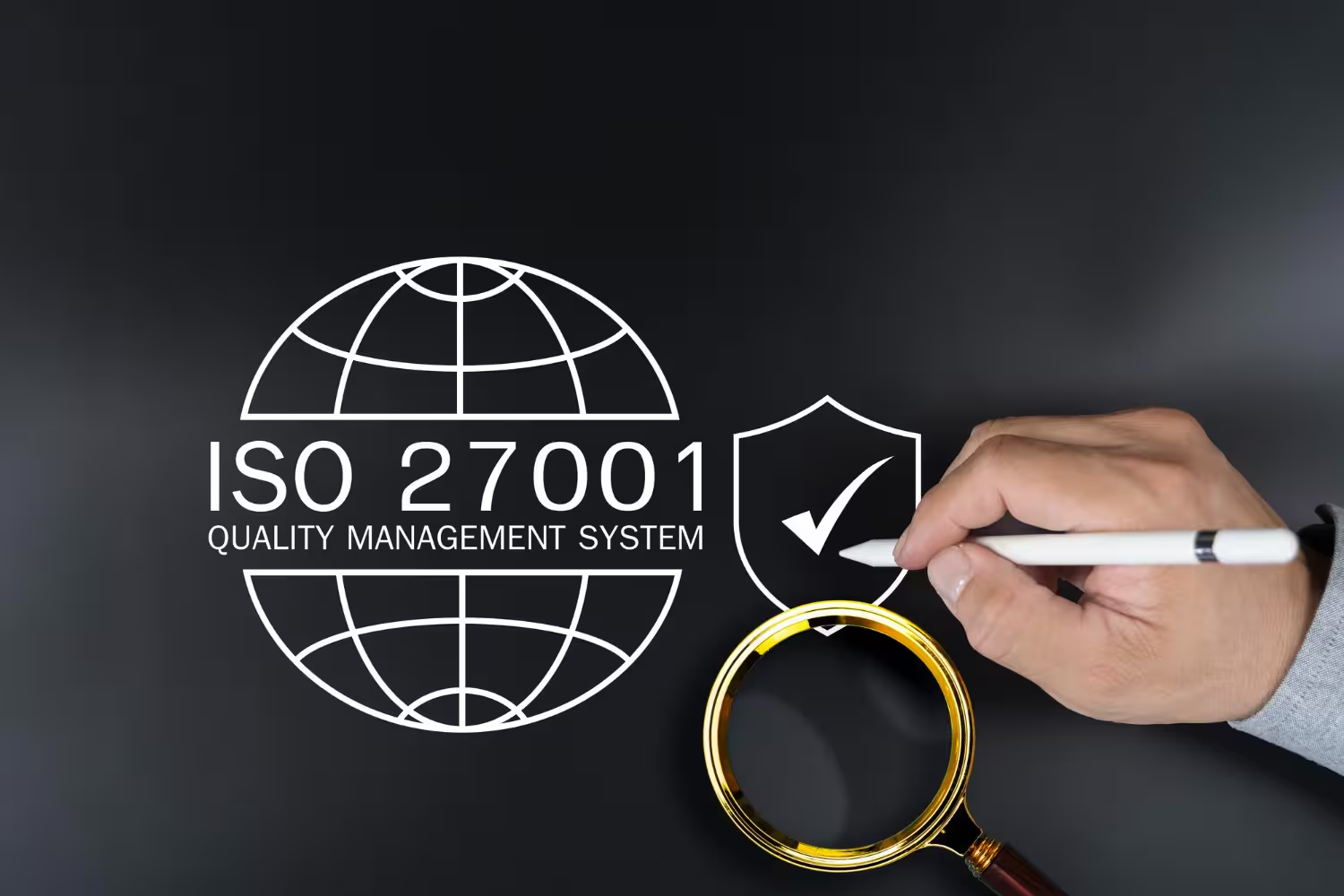The Ins and Outs of Workplace Harassment in Federal Law
Let’s get into the nitty gritty details of workplace harassment in federal law.

Harassment is illegal in the United States. Federal law doesn't care what kind of harassment takes place. If it happens, it’s unlawful.
Each of the laws is complex and has multiple parts. The laws define what harassment can look like, what someone can do about the harassment, and how to prove that the situation was harassment.
Unless you are a lawyer or have experience with looking up and interpreting the technical language of the law, navigating the legalities around workplace harassment can be overwhelming. That said, it doesn’t mean you need a lawyer or some other legal expert to make sense of a hostile work environment.

Understanding the legalities of the workplace is a necessity, especially when dealing with harassment. The laws determine what someone can and cannot do to take action against these situations.
The three main federal laws concerning workplace harassment are…
- Title VII of the Civil Rights Act of 1964
- Age Discrimination in Employment Act of 1967
- Americans with Disabilities Act of 1990
Let’s get into the nitty gritty details of workplace harassment in federal law.
Title VII of the Civil Rights Act of 1964
The Civil Rights Act discusses what constitutes unlawful employment practices for employers, employment agencies, labor organization practices, and training programs.
Employer Practices
It is illegal for an employer to fail or refuse to hire someone because of their…
- Race
- Skin color
- Religious affiliations
- Sex
- National origin
It is also illegal to discharge an employee due to these demographic statuses. Similarly, it is illegal to discriminate against any individual concerning their compensation, terms, conditions, or privileges of employment due to their minority status.
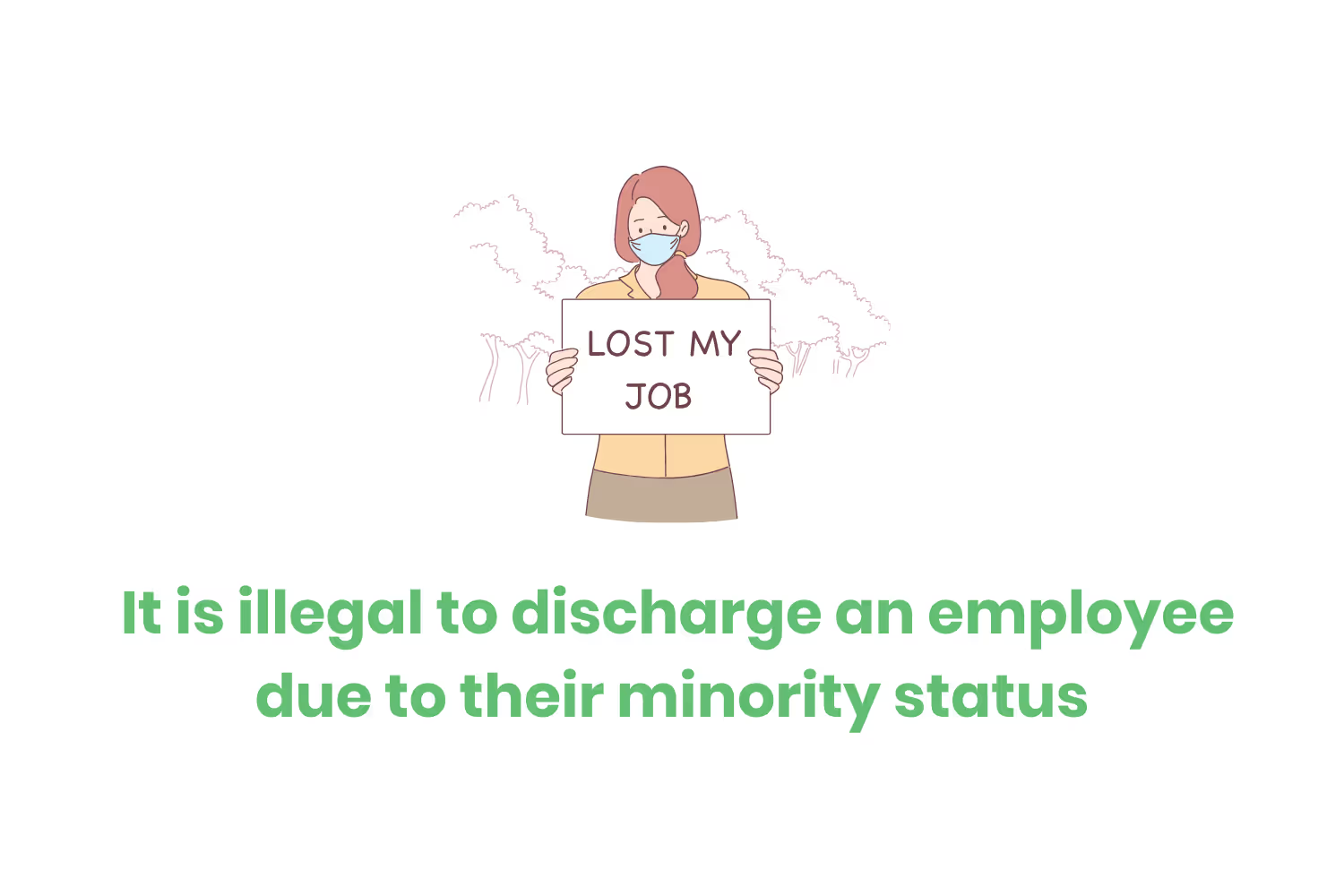
It is unlawful for an employer to limit, segregate, or classify their employees in any way because of the employee’s…
- Race
- Skin color
- Religious affiliations
- Sex
- National origin
The same is true for anyone applying for employment at the company. It is illegal for a company to take these actions as a means to deprive the individual of employment opportunities.
Employment Agency Practices
It is unlawful for an employment agency to refuse to refer an individual for employment because of the individual’s…
- Race
- Skin color
- Religious affiliations
- Sex
- National origin
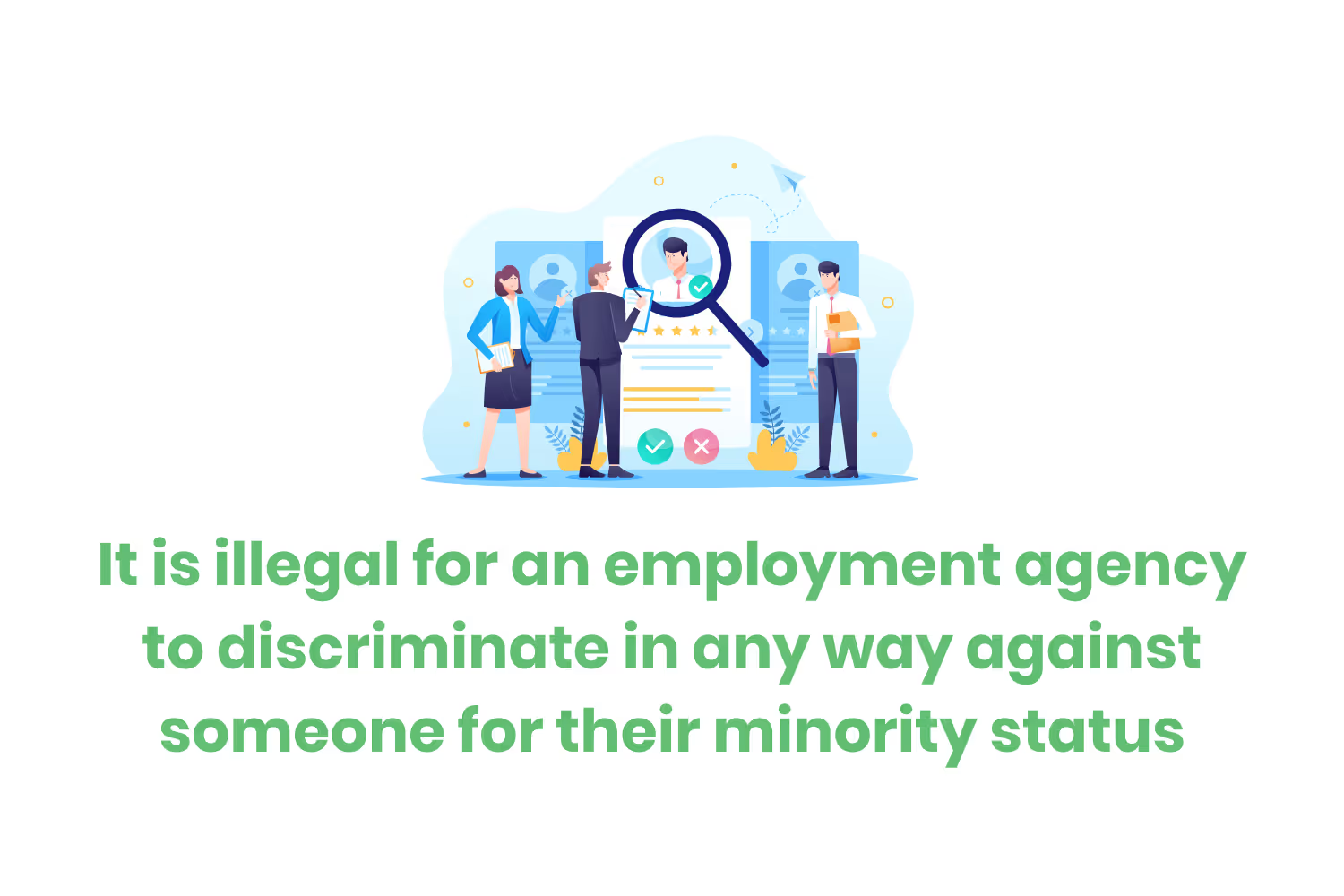
Similarly, it is illegal for an employment agency to discriminate in any way against someone for their minority status. At the same time, it is illegal for an employment agency to classify or refer someone for employment due to their minority status.
Labor Organization Practices
It is unlawful for a labor organization to exclude someone from membership because of their…
- Race
- Skin color
- Religious affiliations
- Sex
- National origin
Additionally, it is illegal for labor organizations to discriminate in any way against an individual due to their minority status.
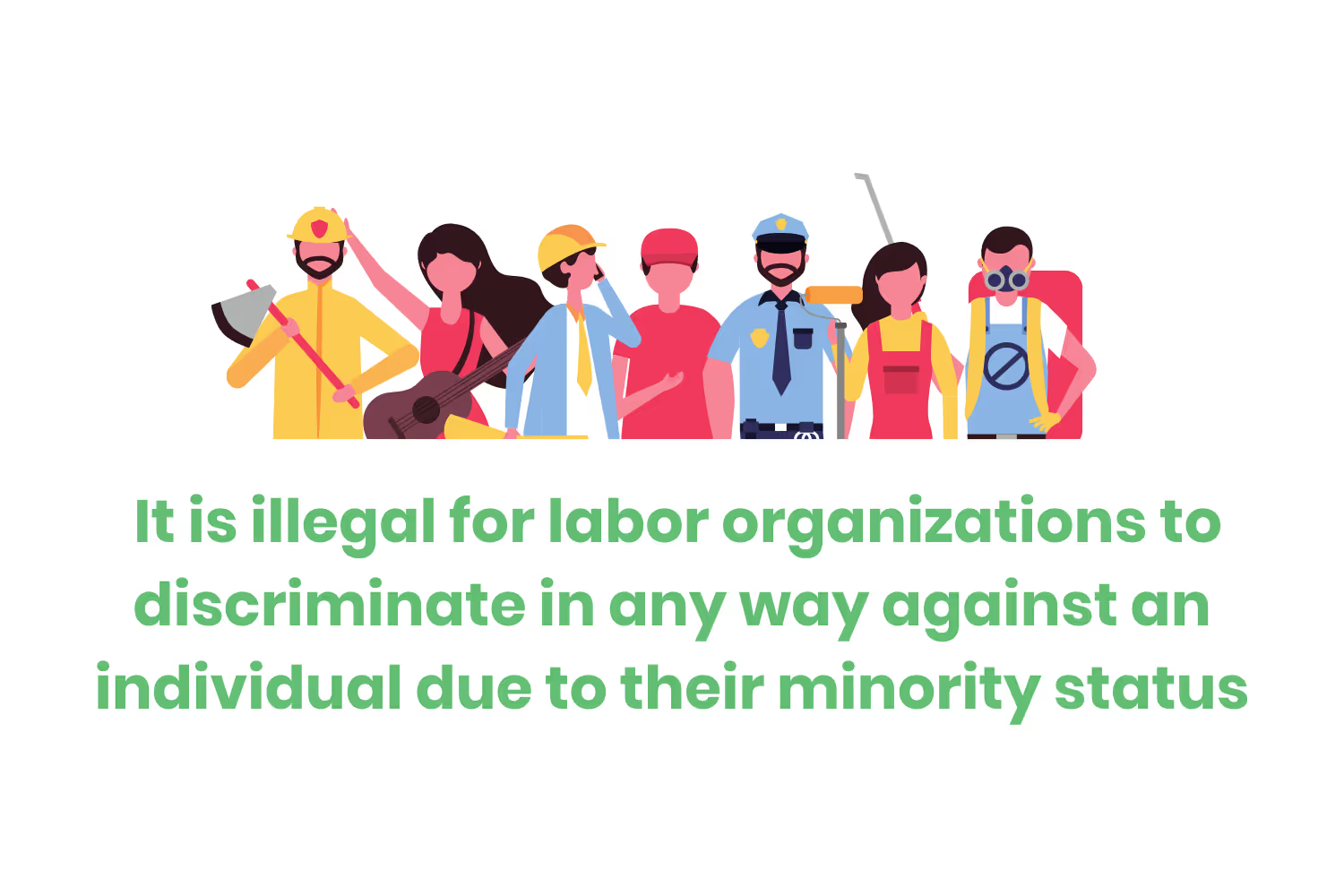
It is also unlawful to limit, segregate, or classify membership applicants and active members in any way concerning their minority status which would deprive someone of employment opportunities. It is unlawful for a labor organization to take these actions to adversely affect someone’s status as an employee or employment applicant.
Lastly, it is unlawful for a labor organization to conspire against an individual in a manner that would lead an employer to discriminate against someone that would violate this law.
Training Programs
It is unlawful for an employer, labor organization, or joint labor-management committee to discriminate against an individual because of their…
- Race
- Skin color
- Religious affiliations
- Sex
- National origin
Such discrimination relates to said individual's admission to, or employment in, any program established to provide apprenticeship or other training.
The Age Discrimination in Employment of 1967
The Age Discrimination in Employment Act (ADEA) discusses what constitutes unlawful age discrimination practices for employers, employment agencies, and labor organization practices.
Employer Practices
It is unlawful for an employer to fail or refuse to hire an individual because of their age. Similarly, it is illegal for the employer to discharge someone for the same reasons. An employer may not otherwise discriminate against anyone concerning compensation, terms, conditions, or privileges of employment due to their age.

It is also unlawful for an employer to limit, segregate, or classify employees in any way that would deprive someone of employment opportunities because of the employee’s age. The employer may not take these actions to adversely affect someone’s employment at the company due to their age.
Lastly, it is illegal for an employer to reduce an employee's wage rate to comply with the laws mentioned above.
Employment Agency Practices
It is illegal for an employment agency to fail or refuse to refer someone for employment on account of their age.
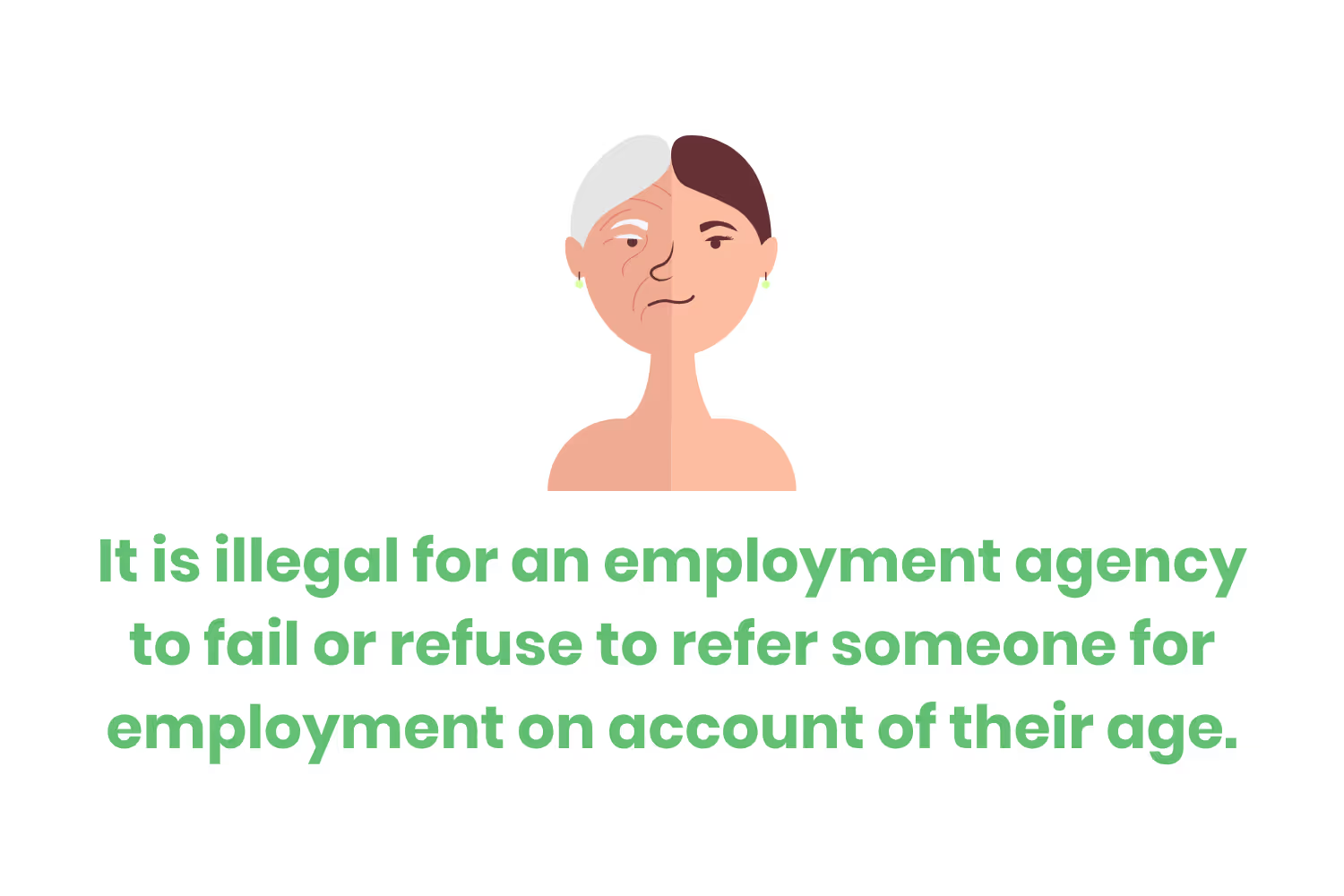
An employment agency may not discriminate against a person due to their age. Furthermore, they may not classify nor refer someone for employment based on that someone’s age.
Labor Organization Practices
It is illegal for a labor organization to exclude or expel someone from its membership because of that someone’s age. It is unlawful to discriminate in any way against someone based on their age.
It is also unlawful to limit, segregate, or classify its membership in any way which would deprive someone of employment opportunities. It is illegal to fail or refuse to refer someone for employment to limit employment opportunities. Furthermore, it is unlawful for a labor organization to adversely affect someone’s status as an employee or applicant for employment due to their age.
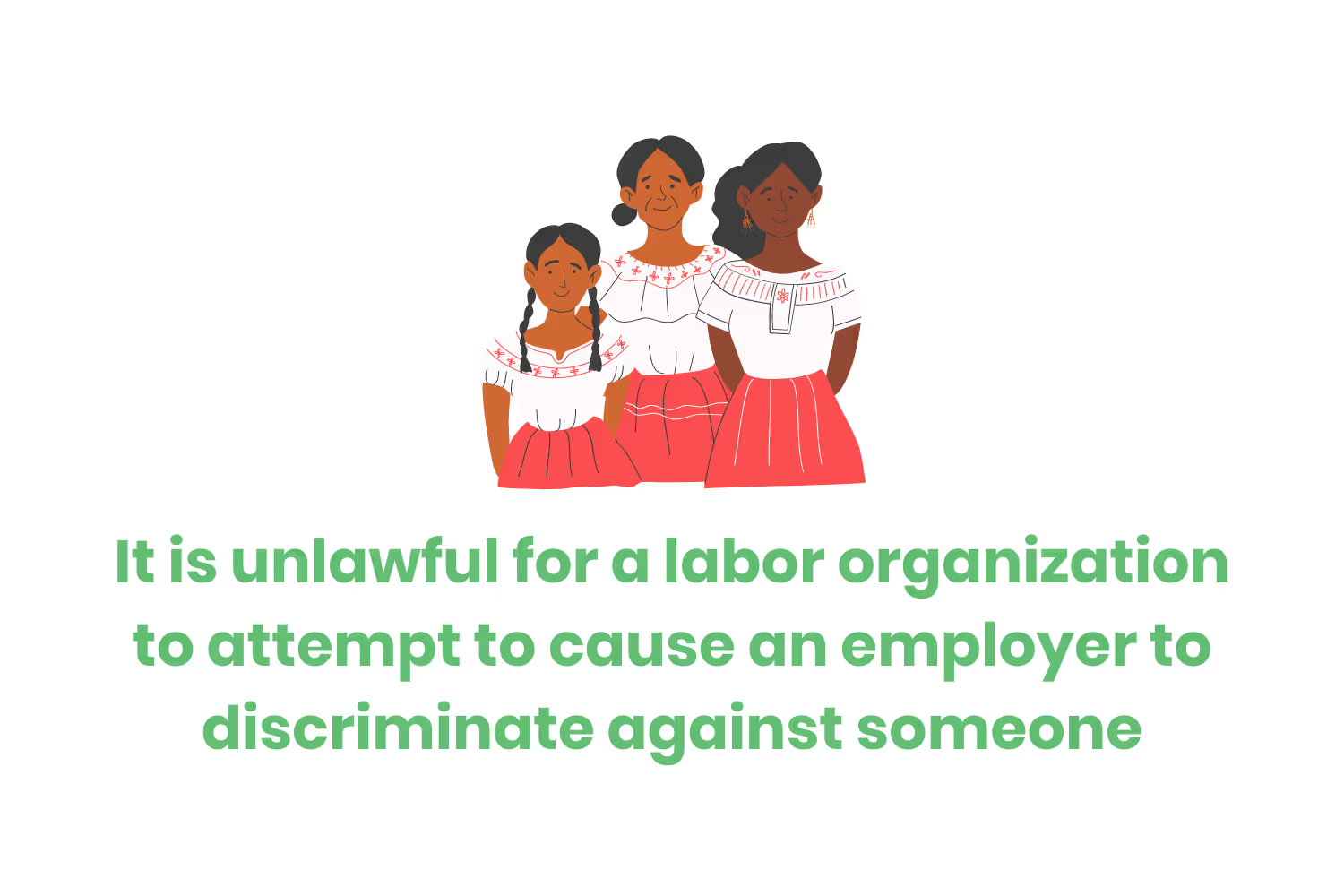
Lastly, it is unlawful for a labor organization to attempt to cause an employer to discriminate against someone in violation of the laws above.
The Americans with Disabilities Act of 1990
The Americans with Disabilites Act discusses the illegal conduct that consitiutes disability discrimination. It also discusses illegal conduct known as retaliation, interference, coercion, and intimidation.
Title I
No covered entity shall discriminate against a qualified person based on disability. This is concerning job application procedures, hiring employees, advancement in the workforce, discharge of employees, employee compensation, job training, terms, conditions, and privileges of employment.
This discrimination can take on several forms, as explained below.
It is illegal for a company to limit, segregate, or classify a job applicant or employee in any way related to their disability that may adversely affect the employee. It is also illegal to do this if the employer’s actions may affect the person’s employment or application process.

It is unlawful for an organization to participate in a contractual arrangement, or any other type of arrangement, that could subject a qualified applicant with a disability to discrimination. This part of the law affects organizations like…
- Employment or referral agency
- Labor union
- An organization providing fringe benefits to an employee of the covered entity
- An organization providing training and apprenticeship programs
The law does not permit an employer to utilize standards, criteria, or administration methods that discriminate against a disability. The law also says an employer can’t do this if it perpetuates the discrimination of others subjected to common administrative control.
A company may not exclude or otherwise deny equal jobs or benefits to a qualified job candidate because of the individual’s association with someone that has a known disability.
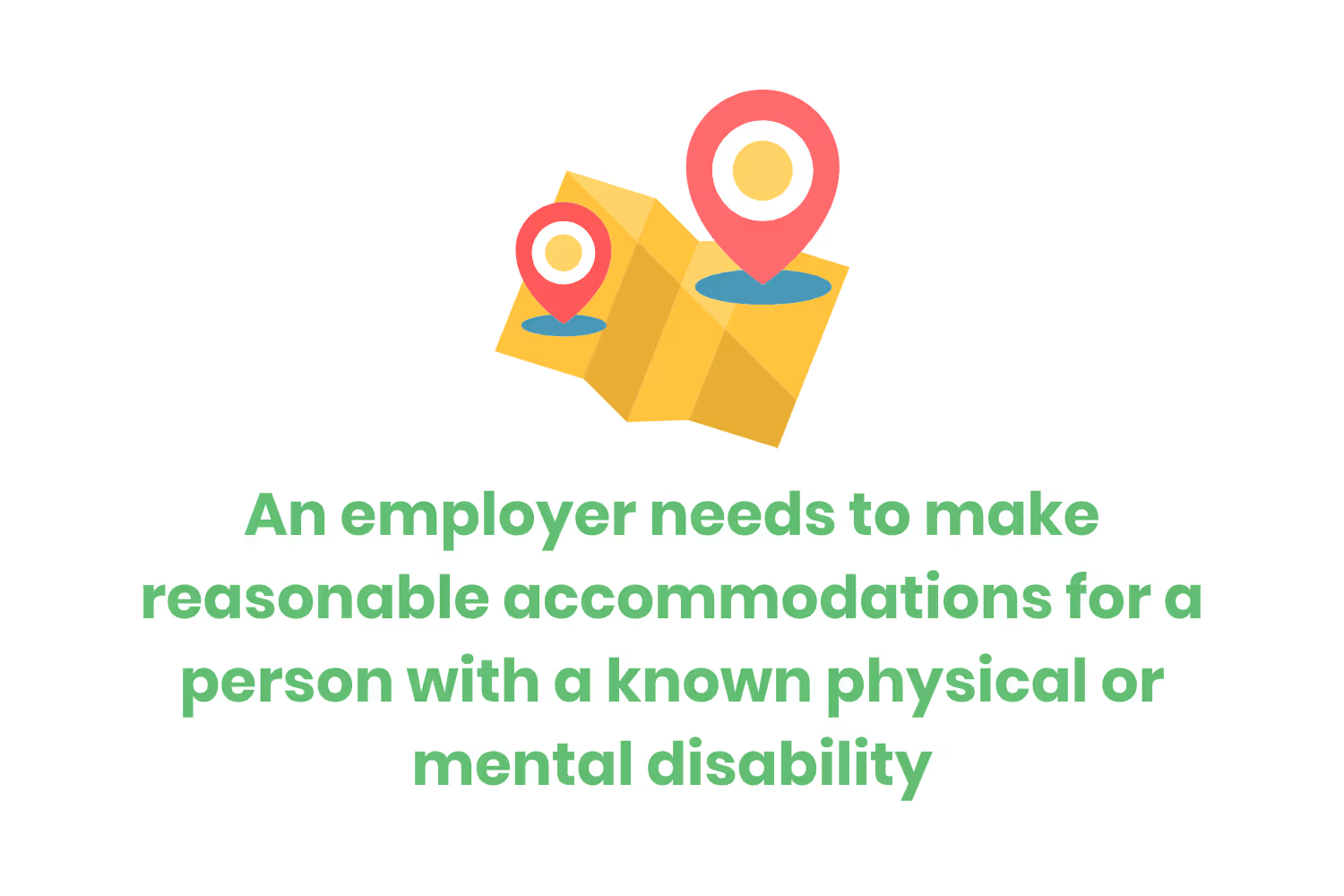
An employer needs to make reasonable accommodations for a person with a known physical or mental disability. The law says that the only exception to this rule is when a covered entity can demonstrate that the accommodation would impose an undue hardship on the business’s operations.
At the same time, a company cannot deny employment opportunities to a qualified job applicant or employee with a disability. The law says that this denial is illegal if it happened because of the individual's need for accommodation.
Title V
Title V discusses retaliation and coercion under miscellaneous provisions.
First, no one can discriminate against someone because that someone opposed an action made illegal in the laws above. No one can take action because someone made a charge, testified, assisted, or participated in any way in an…
- Investigation
- Proceeding
- Hearing
This means that it is illegal to retaliate against an employee that speaks up against abuse or harassment in the workplace.
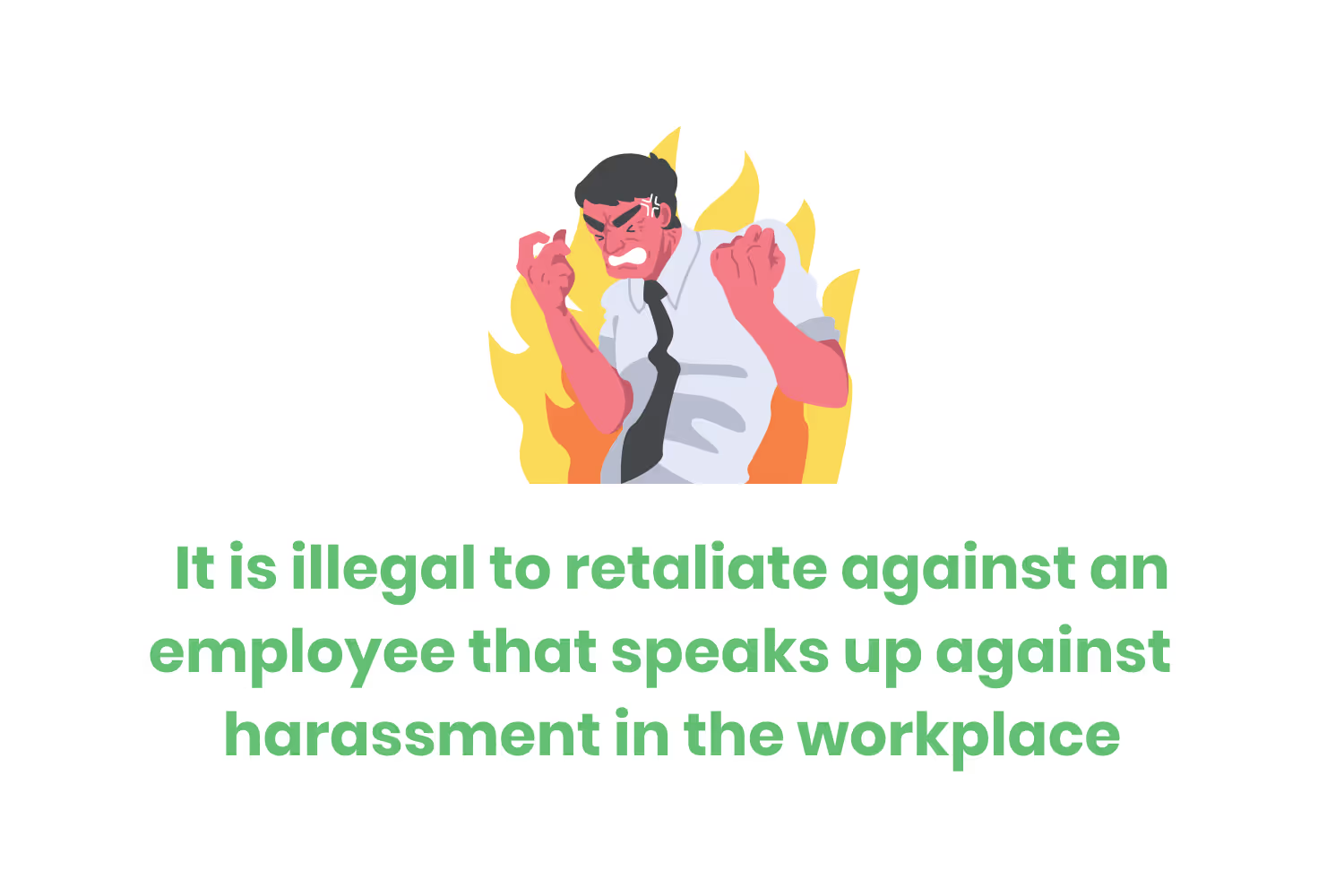
The law also says that any interference, coercion, or intimidation is illegal. Coercion, intimidation, threats, or any interference with an individual who exercises their rights is not allowed.
Conclusion
The federal laws about workplace harassment can be confusing and intimidating. In a nutshell, harassment is any unwelcome conduct concerning a person’s…
- Race
- Color
- Religion
- Sex
- Sexual orientation
- Gender identity
- Pregnancy
- National origin
- Older age (beginning at the age of 40)
- Disability
- Genetic information
- Including family medical history
Harassment becomes unlawful when someone has to endure the conduct to continue working for the company. It also becomes unlawful when the conduct is severe or pervasive enough that a reasonable person would consider the environment to be hostile, intimidating, or abusive.
The more you educate yourself about federal and state laws concerning workplace harassment, the better off you are to fight the hostility. When it comes to protecting minorities in the workforce, the law is on your side. Utilize the law to your advantage to end hostile work environments.
Emphasize your product's unique features or benefits to differentiate it from competitors
In nec dictum adipiscing pharetra enim etiam scelerisque dolor purus ipsum egestas cursus vulputate arcu egestas ut eu sed mollis consectetur mattis pharetra curabitur et maecenas in mattis fames consectetur ipsum quis risus mauris aliquam ornare nisl purus at ipsum nulla accumsan consectetur vestibulum suspendisse aliquam condimentum scelerisque lacinia pellentesque vestibulum condimentum turpis ligula pharetra dictum sapien facilisis sapien at sagittis et cursus congue.
- Pharetra curabitur et maecenas in mattis fames consectetur ipsum quis risus.
- Justo urna nisi auctor consequat consectetur dolor lectus blandit.
- Eget egestas volutpat lacinia vestibulum vitae mattis hendrerit.
- Ornare elit odio tellus orci bibendum dictum id sem congue enim amet diam.
Incorporate statistics or specific numbers to highlight the effectiveness or popularity of your offering
Convallis pellentesque ullamcorper sapien sed tristique fermentum proin amet quam tincidunt feugiat vitae neque quisque odio ut pellentesque ac mauris eget lectus. Pretium arcu turpis lacus sapien sit at eu sapien duis magna nunc nibh nam non ut nibh ultrices ultrices elementum egestas enim nisl sed cursus pellentesque sit dignissim enim euismod sit et convallis sed pelis viverra quam at nisl sit pharetra enim nisl nec vestibulum posuere in volutpat sed blandit neque risus.

Use time-sensitive language to encourage immediate action, such as "Limited Time Offer
Feugiat vitae neque quisque odio ut pellentesque ac mauris eget lectus. Pretium arcu turpis lacus sapien sit at eu sapien duis magna nunc nibh nam non ut nibh ultrices ultrices elementum egestas enim nisl sed cursus pellentesque sit dignissim enim euismod sit et convallis sed pelis viverra quam at nisl sit pharetra enim nisl nec vestibulum posuere in volutpat sed blandit neque risus.
- Pharetra curabitur et maecenas in mattis fames consectetur ipsum quis risus.
- Justo urna nisi auctor consequat consectetur dolor lectus blandit.
- Eget egestas volutpat lacinia vestibulum vitae mattis hendrerit.
- Ornare elit odio tellus orci bibendum dictum id sem congue enim amet diam.
Address customer pain points directly by showing how your product solves their problems
Feugiat vitae neque quisque odio ut pellentesque ac mauris eget lectus. Pretium arcu turpis lacus sapien sit at eu sapien duis magna nunc nibh nam non ut nibh ultrices ultrices elementum egestas enim nisl sed cursus pellentesque sit dignissim enim euismod sit et convallis sed pelis viverra quam at nisl sit pharetra enim nisl nec vestibulum posuere in volutpat sed blandit neque risus.
Vel etiam vel amet aenean eget in habitasse nunc duis tellus sem turpis risus aliquam ac volutpat tellus eu faucibus ullamcorper.
Tailor titles to your ideal customer segment using phrases like "Designed for Busy Professionals
Sed pretium id nibh id sit felis vitae volutpat volutpat adipiscing at sodales neque lectus mi phasellus commodo at elit suspendisse ornare faucibus lectus purus viverra in nec aliquet commodo et sed sed nisi tempor mi pellentesque arcu viverra pretium duis enim vulputate dignissim etiam ultrices vitae neque urna proin nibh diam turpis augue lacus.


